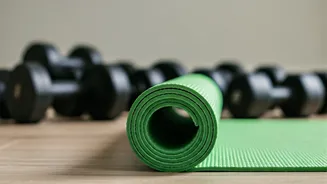Squatting: The Basics
Squatting, an age-old movement, is a fundamental exercise easily incorporated into daily life. It involves lowering the body from a standing position by
bending the knees and hips, then returning to an upright stance. This seemingly simple action works a multitude of muscles, including those in the legs, core, and glutes. The beauty of squats lies in their versatility. They can be performed anywhere, anytime, without any special equipment, making them accessible to almost everyone. The basic movement emphasizes proper form, which is key to avoiding injuries and maximizing benefits. Keep the back straight, chest up, and weight balanced throughout the feet. Beginners often find it helpful to start with shallow squats, gradually increasing the depth as strength and flexibility improve. This methodical approach ensures a safe and effective path toward reaping the rewards of this powerful exercise. Consistent practice will build strength, improve flexibility, and enhance overall body awareness. Squatting is more than just a physical activity; it's a practice of mindfulness, requiring focus and control, which in turn fosters mental clarity and resilience.
Physical Transformations Unveiled
Regular squatting yields a cascade of physical benefits. It is a potent exercise for building lower body strength. Over time, consistent squatting leads to significant gains in leg muscles, encompassing the quadriceps, hamstrings, and calves. Moreover, the core gets a solid workout as it is integral to maintaining balance and stability during the movement. This core engagement promotes enhanced posture and reduces the risk of back pain. Furthermore, squats can contribute to fat loss, by revving up the metabolism, and stimulating muscle growth. The increased muscle mass supports a higher basal metabolic rate, where the body burns more calories even at rest. The impact on overall fitness is substantial, as squatting boosts cardiovascular health and endurance. It also increases joint mobility and flexibility. Proper form is essential to prevent injuries. One should maintain a straight back, chest lifted, and weight distributed evenly across the feet. Beginners might start with partial squats, gradually increasing the depth as they grow stronger and more flexible. Regular squatting fosters a stronger, more toned physique and increased physical resilience.
Mindful Mental Boost
Beyond the physical benefits, squatting offers a remarkable mental uplift. The act of concentrating on form and technique cultivates mindfulness. This focus on the present moment can reduce stress and quiet the mind. Furthermore, the discipline required to perform squats regularly can improve self-esteem and boost mental resilience. Overcoming the initial challenges, and witnessing progress, breeds a sense of accomplishment and encourages a positive self-image. Squatting can become a form of meditation. Concentrating on the breath and body movements brings a sense of calm. This practice lowers the level of stress hormones, fostering an overall sense of tranquility and clarity. The mind-body connection becomes more evident, as increased awareness of physical sensations translates to heightened mental awareness. This can improve mood, alleviate anxiety, and enhance cognitive function. The regular practice of squatting instills discipline. It promotes a positive mindset, and helps one to better manage daily stressors.
Implementing Into Routine
Integrating squatting into your life is straightforward, requiring no specialized equipment or location. Start with the basics: stand with feet shoulder-width apart, toes slightly outward. Keep the back straight, and chest up. Then, lower the body as if sitting in a chair, pushing the hips back and down while keeping the weight on the heels. The goal should be to lower as far as is comfortable. In the beginning, aim for a few sets of 10-15 repetitions each, and gradually increase both the sets and repetitions as strength improves. It's best to perform squats daily. Even a 5-minute commitment can lead to notable changes. Consistency is crucial. Creating a regular schedule will make squatting a habit. Try squatting first thing in the morning, during a lunch break, or before winding down for the evening. If starting with the full squat feels difficult, modified versions are available. These include wall sits or using a chair for support. Listen to your body and rest when needed. Remember that proper form is more important than speed or the number of squats. Over time, this simple practice will deliver significant returns, physically and mentally, fostering a better you.












